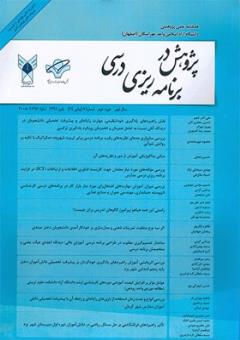-
-
List of Articles
-
Open Access Article
1 - Analysis and explanation of higher education curriculum patterns in Iran
mohammad javadipour Somaye Rahimi Maryam Bani Amarian Hasti Farrokhpour -
Open Access Article
2 - Concept Analysis of Digital Competency in General Education
Hassan Hazarkhani Fatemeh zahra Ahmadi Minoo Ayatollahi -
Open Access Article
3 - Identifying the factors affecting the interaction between student intern teachers with school administrators and guidance teachers in order to advance the goals of internship
Alireza Badeleh , Shirin pourghaz -
Open Access Article
4 - Factors affecting professional development of student teachers
zohre zarean parvin samadi parvin ahmadi Maryam Sadat Ghoraishi khorasgani -
Open Access Article
5 - Indicators and components of the curriculum of religious education in the university: a synthesis of the research background based on Roberts' approach
mahmood zarejafarizavareh Hossain Momenimahmouei Mehdi Zeirak Ahmad Akbari toutaj falah mehne -
Open Access Article
6 - Representation of teachers' lived experiences of challenges in bilingual multi-grade classrooms (a phenomenological study)
Yahya Maroofi Pakzad Amiri -
Open Access Article
7 - Discovering and presenting the conceptual model of hidden curriculum in secondary schools (Case study of Sanandaj city)
Reza Shakeri Gholamreza Hajihosseinnejad Majid Aliasgari Hasan Gharibi -
Open Access Article
8 - Presentation of the Sex education curriculum model and its validation based on the experiences of health educators in Isfahan secondary schools
Amirhossein Janatian Farzaneh Vasefian badri shahtalebi -
Open Access Article
9 - Providing a Model for the optimal use of Mobile Phone Social Networks with Emphasis on the Cultural Identity of Students
Faezeh Taghipour -
Open Access Article
10 - Identifying the strategies for implementing the cooperative learning approach in order to develop the leadership skills of elementary school students through meta- synthesis and focus group
Fahima Ansarizadeh Keramati Mohammad Reza seyfollah fazlollahi
-
The rights to this website are owned by the Raimag Press Management System.
Copyright © 2021-2025







